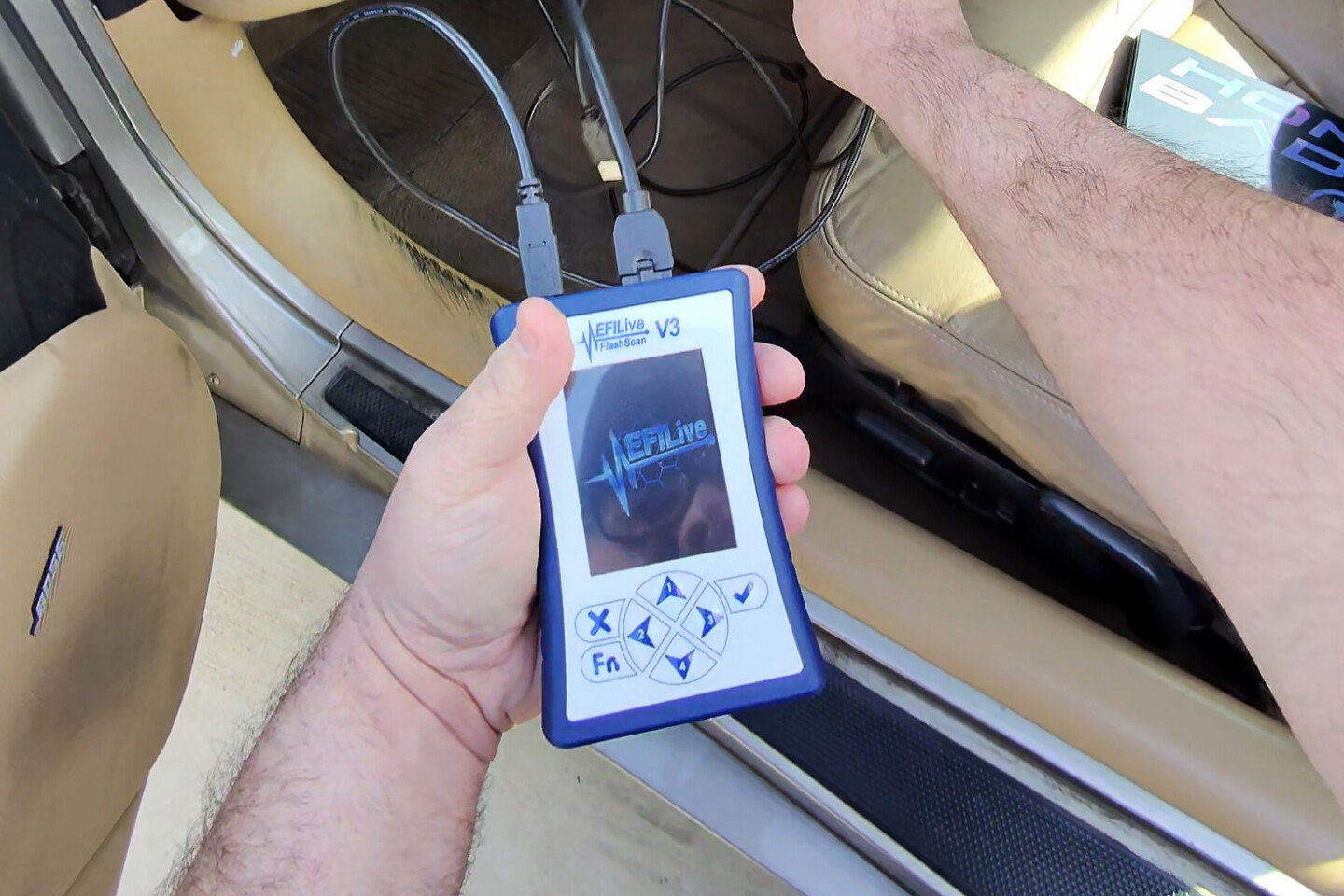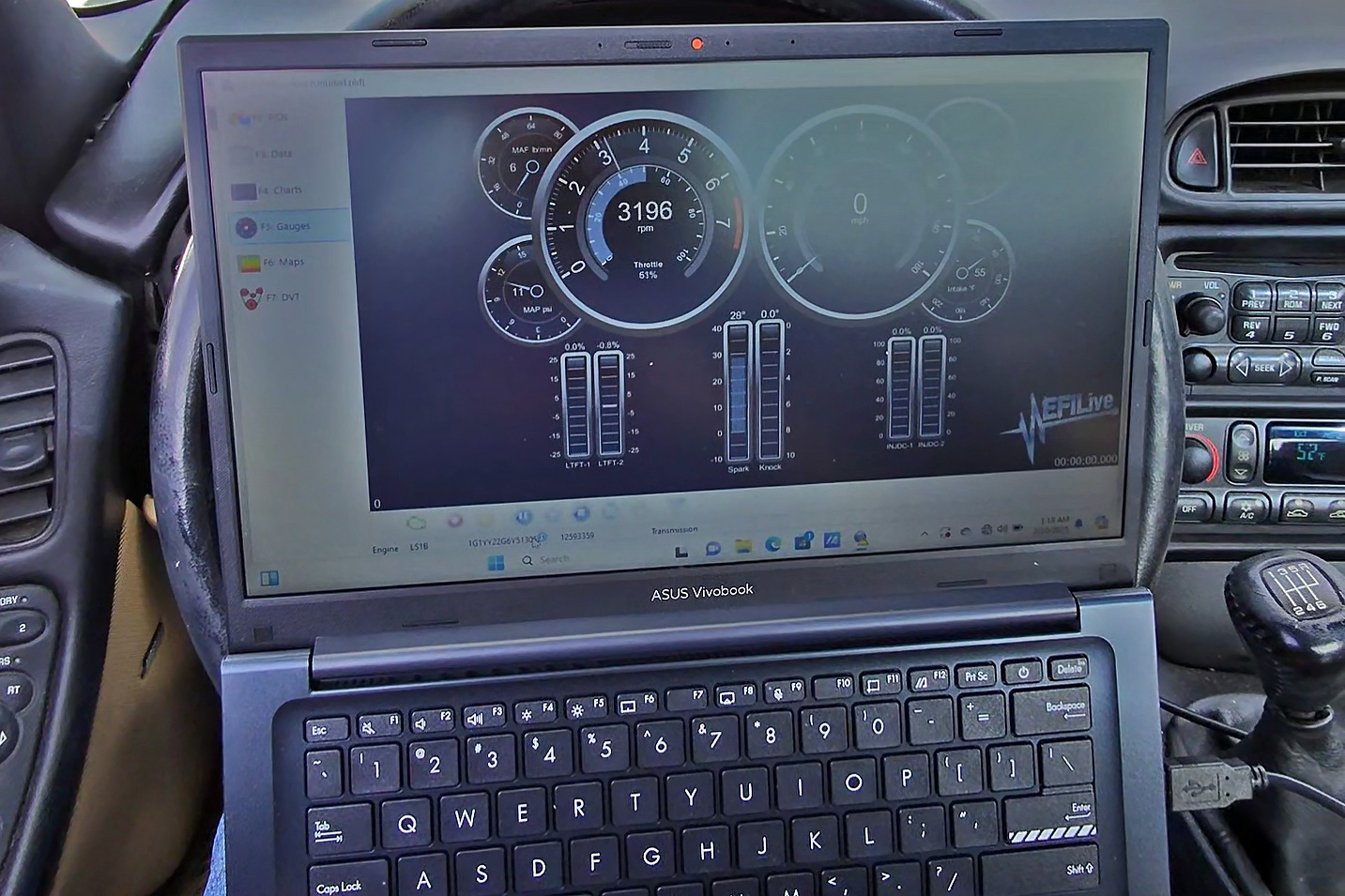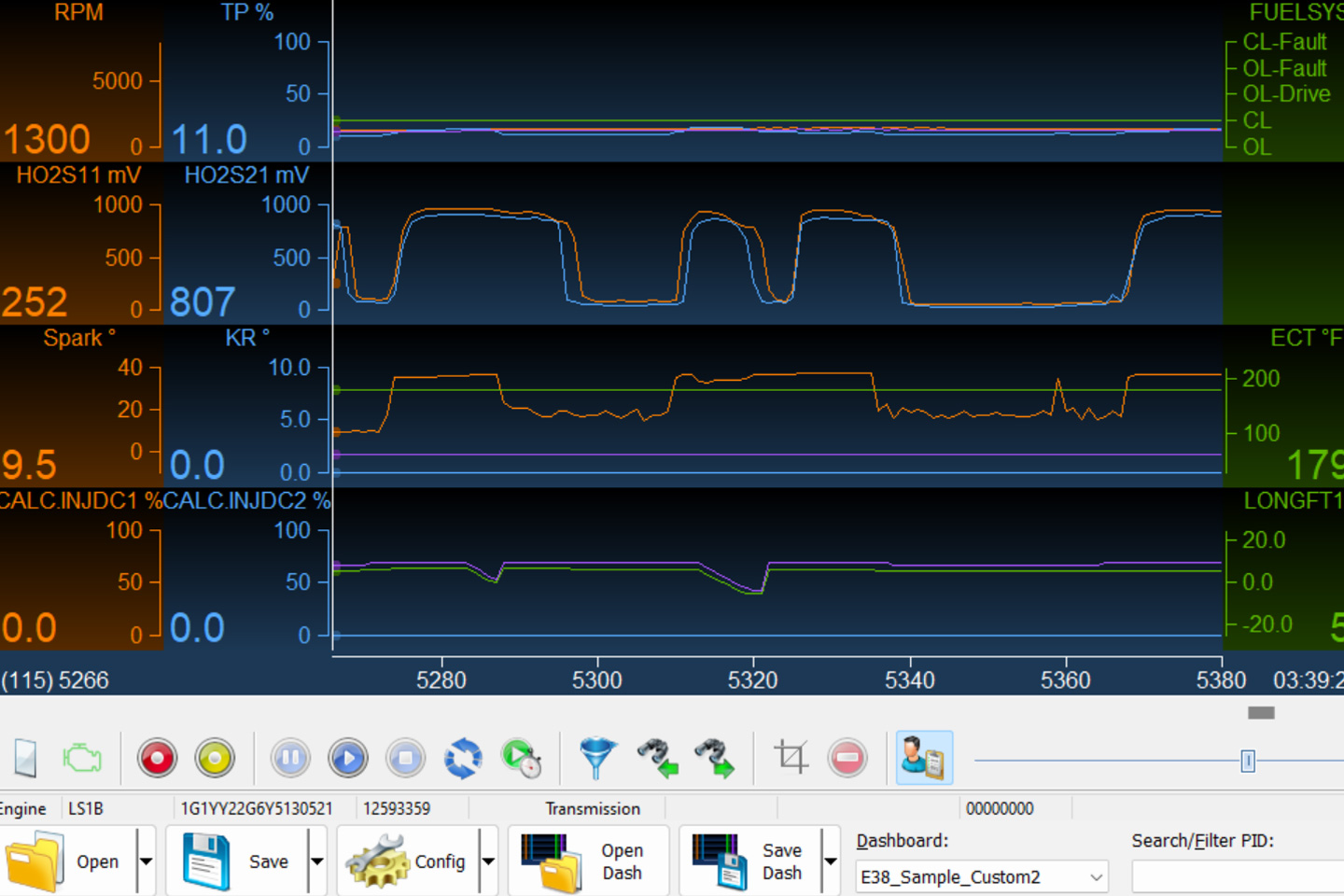When I took over stewardship of Project Honey Badger, it came with the knowledge that after sitting so long, there were some issues with the car. We found some signs of an overly rich condition when we swapped the plugs and wires in a previous article. However, the car still wasn’t behaving correctly. Instead of just guessing at what was going on, we have the benefit of an OBD-II system in the car (a luxury in a project car your author hasn’t had for quite a while) and tools like EFILive.
In order to take full advantage of the diagnostic capabilities of the OBD-II system, you need a solid scan tool. While there are many out there, ranging from 25-dollar Amazon specials of dubious origin and quality, to subscription-based superscanners that cost more than a used car, we wanted to go with something that would not only function as a scanner, but also log that data, and eventually be expandable to perform tuning on the car. That led us to EFILive.
Known primarily for their GM and Diesel tuning capabilities, the New Zealand-based EFILive has several different hardware and software options for our 2000 C5 Corvette. Since our primary focus is diagnosing right now, EFILive recommended the FlashScan V3 device for our project.

The FlashScan V3, at it’s core, is a capable handheld OBD-II scanner. You can see with the USB cable connected in the upper left-hand corner, and the laptop peaking out on the seat, we’re using it in its pass-through configuration.
Looking At The EFI Live FlashScan V3
At first glance, the name “FlashScan” sounds like a scan-only tool, but it’s far more than that. Sure, in its base configuration, it is just a scan tool. One that is not only capable of scanning and clearing fault codes, but performing internal datalogging, as well as pass-through datalogging to a laptop — a feature we greatly appreciate.
The quick device setup makes life a lot easier, and being able to datalog directly to the device’s built-in 512MB SD card and download it later makes it a true plug-and-play solution. However, based on your author’s previous experience, using the device in pass-through mode is our preferred method of operation. In pass-through mode, the FlashScan handheld is connected to both the OBD-II port and the laptop simultaneously.
In this configuration, the free EFILive V8 (Version 8, not the engine configuration) software will log up to 24 channels of data at 10Hz. The neat thing about the Windows software is that those channels are configurable both based on the vehicle’s ECU capabilities, as well as being user-definable as well. Speaking of being configurable, the EFILive Windows software also has a gauge mode that displays a screen of live data, in a configurable virtual gauge cluster. This allows you to visually monitor different channels than what you are logging in the background (the channels can be the same, as well).
Additionally, the FlashScan can function as a tuning tool as well. You can either order the tool with the license to unlock its tuning abilities at the time of purchase, or later down the road, although the license is $50 cheaper with the original purchase. The tool itself will work with up to 600 VIN-specific tuning licenses, so unless you are a super-high-volume tuner, you’ll likely only ever need the one flash tool.

Available in both “monitoring” and “logging” mode, the gauge screen provides real-time data on up to 24 different PIDs monitored by the OBD-II system.
Honey Badger’s Arduous Journey
As mentioned previously, once we got new plugs and wires installed in Honey Badger’s cammed LS1, it was able to stay running in the driveway, but it was far from pretty. Using our keen sense of sight and smell, it was glaringly obvious that there was a source of extra fuel coming from somewhere. Living by Occam’s Razor, we went to the easiest possible solution first, and disconnected the Nitrous Express fuel solenoid from the throttle body plate.
Unfortunately, that had zero effect on Honey Badger’s symptoms. However, one thing we noticed was that the black smoke was biased to one bank of the exhaust. So we plugged in the FlashScan and pulled up the live data screen. We saw that the injectors were being commanded to open properly, but the oxygen sensor readings were quite far apart. That led us to believe that we had a sticky injector that wasn’t completely closing.
In order to test that theory, we added some of AMSOIL’s Upper Cylinder Lubricant Corrosion Inhibitor. Besides the top-end lubrication, it also contains chemicals to clean out fuel injectors and maintain that cleanliness. The instructions say to add a bottle with a fill-up, so a full bottle into a 3/8-full tank means it’ll be even more effective, right?

AMSOIL’s Upper Cylinder Lubricant Corrosion Inhibitor is also an injector cleaner. The instructions say to add with a fill-up. So dumping the whole bottle into a 3/8th-full tank means it’ll work better, right?
With the FlashScan plugged in and monitoring (not recording, because yours truly clicked the wrong button in the software), we backed out of the driveway and took the car on its first trip further than “around the block” in at least six years. While the engine died twice coming to a stop (which is the data we were really hoping to capture) on the way out to the photo spot, something interesting happened. After a few full-boogie rips on the trip back, the idle coming to, and at stops began to smooth out.
It wasn’t until about 8:00 pm on Sunday evening that I noticed there were no log files in the software. After some unkind words to myself (about myself), I took it out at lunch the following day, with the correct “record” button clicked, and made a couple rips down a local backroad. On that outing, there were several subjective indicators that things were improving.
First, the stumbling idle and dying at stop signs was completely gone. The second was that when I came back from my drive, my clothes didn’t smell like unburnt fuel. Pulling up the data, an interesting trend appeared. At the beginning of the drive, there was still some separation between the oxygen sensors’ readings. But as the log continues, they get closer and closer to one another. To me, this suggests that the fuel delivery, bank to bank, is equalizing — almost like a stuck (or sticky) injector became less and less “stuck.”

The oxygen sensor readings look much more like you would expect towards the end of the second drive. So, either an injector cleared itself out, or a bad O2 sensor came back to life. Based on a scientific wild ass guess, it was the former, not the latter. But, we’ll be replacing the O2 sensors soon, just to be safe.
The second thing the EFILive datalog revealed was a few spikes of Knock Retard. While not enough to cause any immediate concerns, it does dictate the next course of action for the car. Fill the tank with known-good gas, add in a little BOOSTane Professional to bring everything up to 94 octane, and see if the knock spikes go away, or if I need to look at replacing the knock sensors. Additionally, even though the oxygen sensor readings seem to have normalized, replacing them seems like a no-brainer.
While it seems like we might have gotten lucky and not had to pull the injectors out to be professionally cleaned, we still have a lot of datalogging to do as we take the car on progressively longer jaunts. And it seems like, sooner rather than later, we need to get into the tune. As we mentioned earlier, the EFILive FlashScan V3 hardware is upgradable to a tuning device. So, that’s exactly what we did.
Upgrading The EFILive FlashScan To A Tuning Tool
We simply went to EFILive’s website, selected the “FlashScan GM Tuning” product, entered the device serial number, and, ten minutes later, we had the unlock for the device as well as two VIN Licenses. The email you receive when upgrading the device consists of the device unlock code you enter into the scanner as well as detailed instructions on the scanner unlock procedure, which is remarkably simple. Of note, if you start off with the tuning option unlocked when you purchase the device initially, you save $50 over purchasing the scanner and unlocking it at a later date.
The first step before we start playing with the tune is to pull and review the tune already on the PCM, and we will be able to see what all has been done, since we, unfortunately, have no point of reference to go back to.
We’re also going to enlist the assistance of some trusted friends to help navigate the GM tuning, as all of our previous OBD-II-based, stock ECU tuning experience is on the Ford side, and we’ve already learned that the OEs call the same parameters something totally different. Plus, we need to get a wideband installed so we can get accurate AFR/Lambda readings. So, make sure to stay tuned, as Project Honey Badger is starting to pick up steam.




















